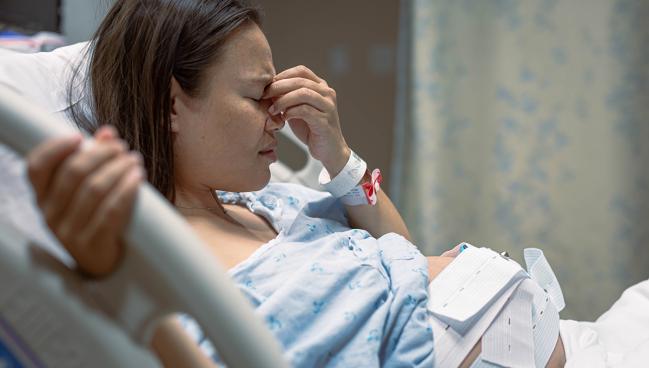Assisted Reproductive Technology Linked to Higher Stroke Risk
The findings shouldn’t, however, discourage those who want children from pursuing ART, experts say.

After accounting for stroke risk factors, those who had an ART code in their record at the time of the delivery hospitalization had significantly higher rates of any stroke, acute ischemic stroke, subarachnoid hemorrhage, and intracerebral hemorrhage compared with those without prior use of ART, Alis Dicpinigaitis, MD (NewYork-Presbyterian/Weill Cornell Medical Center, New York, NY), reported here at the International Stroke Conference.
And among patients who had a stroke during the delivery hospitalization, those with a history of ART were more likely to die and had longer hospital stays, results that hint at increased stroke severity, Dicpinigaitis said.
He put the findings, which were published simultaneously online in Stroke, into the context of the beneficial impact of ART for women seeking to have children.
“It’s important to stipulate that we don’t think that ART is an overwhelmingly dangerous therapy, nor do we want to dissuade people interested in pursuing ART to not pursue it,” Dicpinigaitis said. “Instead, we advocate for counseling older patients who are planning to receive it and for those who have risk factors for stroke to initiate appropriate treatments and, additionally, to adequately control known stroke triggers during hospitalization like psychological distress as well as the development of infection.”
Potential Risks With ART
Dicpinigaitis said ART, which encompasses intrauterine insemination and various methods of in vitro fertilization, is generally considered safe, although there are potential risks and complications. Those include vascular adverse events like hypertensive disorders of pregnancy and venous thromboembolism. The possible mechanism underlying these events is the estrogen surge that occurs during ART, resulting in persistent hormonal imbalances that produce changes in coagulation, hemodynamics, and hemostasis, he suggested.
Because the handful of studies that have examined links between ART and cerebrovascular disease have provided mixed results, he and his colleagues decided to explore the issue further using data from the National Inpatient Sample, which gathers information on hospitalizations in the United States.
The analysis included more than 19.1 million delivery hospitalizations for women ages 15 to 55 that occurred between 2015 and 2020. Overall, 1.1% included a code for ART. Patients with a history of ART versus those without tended to be older and were more likely to be white, to have private insurance, and to have higher income. They also had higher rates of CV comorbidities and stroke risk factors.
Before adjustment, ART was associated with higher rates (per 100,000 person-years) of the following events:
- Any stroke (27.1 vs 9.1)
- Acute ischemic stroke (9.9 vs 3.3)
- Subarachnoid hemorrhage (7.4 vs 1.6)
- Intracerebral hemorrhage (7.4 vs 2.2)
- Cerebral venous thrombosis (7.5 vs 2.7)
The investigators used inverse probability weighting to adjust for potential confounders, and found that the likelihood of all of those events—except for cerebral venous thrombosis—remained higher in the ART group:
- Any stroke (adjusted OR 2.14; 95% CI 2.02-2.26)
- Acute ischemic stroke (adjusted OR 2.75; 95% CI 2.51-3.02)
- Subarachnoid hemorrhage (adjusted OR 3.83; 95% CI 3.38-4.33)
- Intracerebral hemorrhage (adjusted OR 5.37; 95% CI 4.82-5.98)
- Cerebral venous thrombosis (adjusted OR 0.82; 95% CI 0.72-0.93)
A subgroup analysis by age demonstrated that stroke was significantly more common in women with a history of ART irrespective of whether they were older or younger than 35, confirming the findings of the main analysis, Dicpinigaitis said.
ART Is Safe Overall
Eliza Miller, MD (NewYork-Presbyterian/Columbia University Irving Medical Center, New York, NY), who was not involved in the study, underscored that “ART is a safe treatment that helps a lot of people,” adding that “the last thing I would want people to do is not go through that when they want to have a child because of the fear that they’ll have a stroke.”
She told TCTMD that it’s difficult to draw too many conclusions from a study like this because it relies on administrative data. In this case, for instance, it’s unclear how well coding captures the number of people who have used ART, complicating interpretation.
The last thing I would want people to do is not go through [ART] when they want to have a child because of the fear that they’ll have a stroke. Eliza Miller
“I think that it deserves more investigation, but I think that it’s quite possible that this may be overestimating the effects a little bit because of the potential that those who experience a complication are more likely to have that code recorded in the billing data,” Miller said, noting that some patients who use ART but don’t have a complication during the delivery may not have that history of ART recorded.
She pointed out, too, that this study cannot establish a causal relationship between ART and stroke. “It may be that the same factors that led the patients to need ART in the first place also put them at risk for stroke,” she cautioned.
Stroke, which very rarely occurs during a delivery hospitalization, is one of many complications for which women who use ART will be at increased risk, Miller said. “It’s just another reason to make sure that you’re getting really excellent care from a high-risk maternal-fetal medicine specialist during your pregnancy and watching for warning signs that could indicate risk of stroke—for example, higher blood pressure—toward the end of pregnancy.”
Todd Neale is the Associate News Editor for TCTMD and a Senior Medical Journalist. He got his start in journalism at …
Read Full BioSources
Dicpinigaitis AJ, Seitz A, Berkin J, et al. Infertility treatment with assisted reproductive technology as a risk factor for ischemic and hemorrhagic stroke in the United States. Stroke. 2024;Epub ahead of print.
Disclosures
- Dicpinigaitis reports no relevant conflicts of interest.





Comments